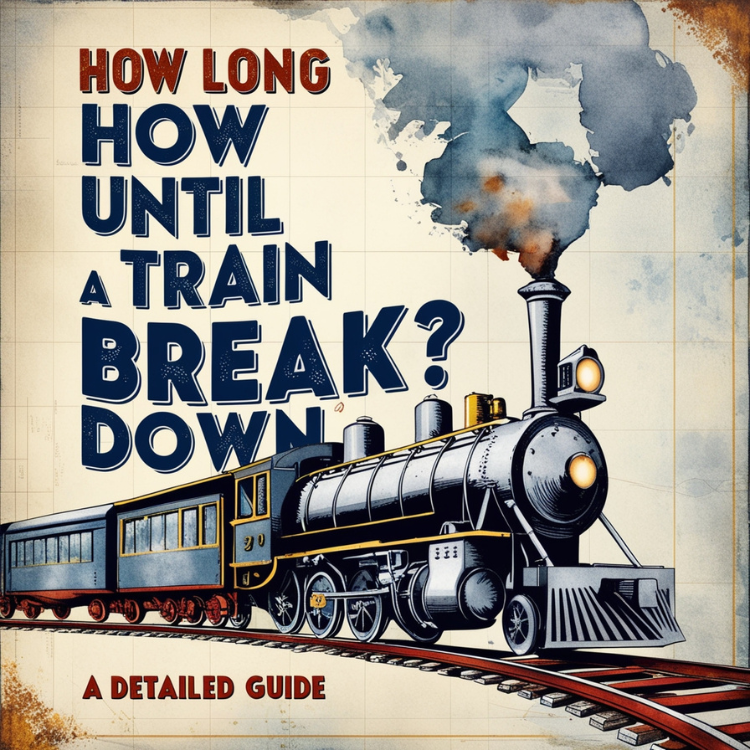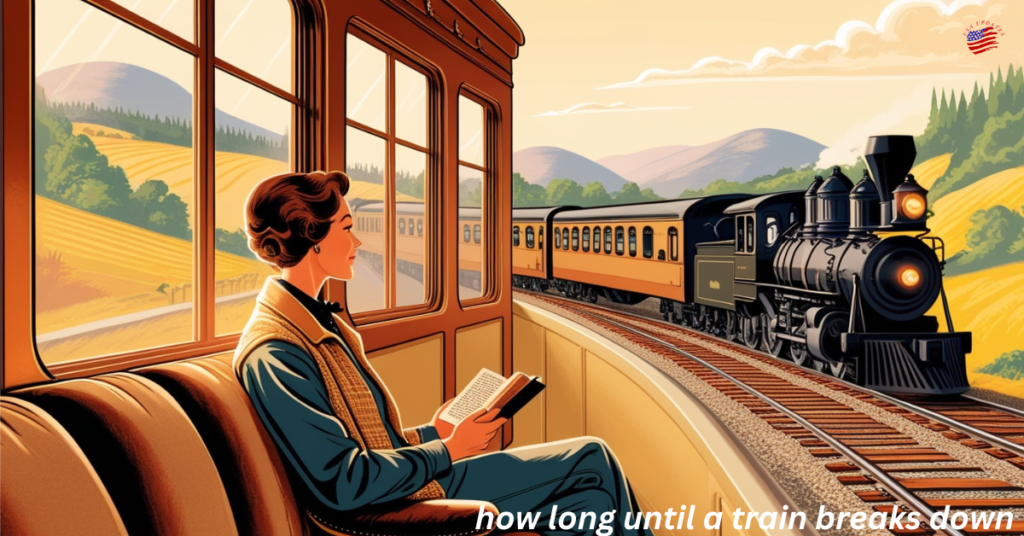
how long until a train breaks down
Introduction
Modern transportation is very diverse, but trains still stand out among those dependable means of quick travel across long distances. But just like any machine, of course, a train may sometimes suffer technical malfunctions and break down. Maybe one cannot guess for sure “how long until a train breaks down,” but there are many factors that come to contribute to how long and how well such large cars will last. What makes them break down, how long they usually last, and how advances in technology have made them last even longer year after year are all things that this article will discuss.

Factors That Influence the Life of Trains
Many things can influence the possible lifespan of a train before it breaks. Most trains are usually made to run in rough conditions and be used continuously. However, some of these factors can influence how long before a train requires repairs or entirely breaks down.
Type of Train and How It’s Used
Different trains wear out at different times. While commuter trains and freight trains wear out in the same, high-speed passenger trains as Japan’s Shinkansen require more frequent maintenance, as it operates a lot on higher speeds. Generally, freight trains carry heavy loads, causing stress, which thus may break down more easily.
Maintenance Frequency
Among all these, there are several things which have to do with how long a train can run without problems such as how often and how well it is maintained. Regular checks of trains fix and replace important parts of them that may last significantly longer than trains not so cared about.
The age of the train
Much like any mechanical system, trains naturally start losing some of their power as they age. The structure is more prone to breakdowns due to worn-out parts, old systems, and just general wear and tear. High humidity and rough weather experience extreme wear and tear on trains much faster than the other two. It has also advanced technology. Newer trains have more contemporary technology, allowing it to run better and break down less. These newer trains with predictive breakdown systems, better brakes, and more energy-efficient engines tend to break down less than old ones.
Understanding: How Long Until a Train Breaks Down
To estimate the break-up time of a train, one needs to check upon its age, mileage, health, and type of service.
▪ Passenger Trains: Average train life for most passenger trains is, between 20-40 years.
▪ Freight trains: These can run for 30 to 50 years or even longer if they get regular upgrades and upkeep.
▪ Commuter Trains: Like subways, commuter rail systems usually last for about 30 years. However, in many places, trains are still in use well after this time because they are constantly being fixed up.

If it is well taken care of, it is not unusual for a train to not have a big breakdown for at least twenty years. How long something lasts also depends on how often it follows its service plan, especially if it runs on routes with a lot of traffic.
Signs and Symptoms Before a Train Breaks Down
There are often warning signs before a train fully breaks down. Operators and maintenance teams of trains pay close attention to these signs because fixing them quickly can stop full breakdowns and expensive repairs:
Strange Sounds
The engine, brakes, or wheels may be making grinding, clanking, or hissing sounds, which could mean wear or a technical problem.
Vibrations that get stronger
Parts that shake a lot, especially when moving quickly, usually need to be fixed. Braking Problems:
The brakes take too long to engage or work too fast. This could be a brake pad problem or the hydraulic system.
Electrical Failures
Screen displays will not stay on, or lights dim and go out.
Key Maintenance Steps to Make Trains Last Longer
Rail companies spend money on regular inspections and repair to make breakdowns less likely. These are some important things to do:
Scheduled Inspections
Checking the engines, brakes, and electrical systems often can help find problems before they happen.
Replacement of Parts
As needed, we swap out worn-out parts to keep the train in good shape. Predictive Maintenance:
Many modern trains use AI and sensors to figure out when they need to fix or replace a part.
Emergency Drills
Train your staff to do regular drills to get ready for breakdowns that happen out of the blue. These repair tasks are very important for figuring out how long a train will last and how often it will break down. The better the care, the longer a train can go without breaking down without warning.

A Year-by-Year Look at Train Durability Improvements
Actually, technological and material advances over the course of the last century have revolutionized the world of train uptimes.
| Year | Development |
| 1960s and 1970s, | diesel-electric and electric trains took main stage and reduced the issue of steam engines. Durability increased with that. |
| 1980s, | computer diagnostics began being integrated, which assisted the repair teams in quickly identifying where the problem had actually occurred |
| 2000s, | Better track materials and building kept trains from wearing out as quickly, which made them last longer. |
| 2010s, | tools for predictive maintenance were introduced. These use data to guess when things will break before they do. |
| 2020s, | Systems based on AI and IoT allow for real-time tracking and further lower the number of breakdowns. |
A Common Myth About Train Breaks Down Band
“Train breaks down band” might make you think of bands or metal parts that hold up a train. In fact, the phrase “Train Breaks Down” is also used in music to describe bands that use the image of a train breakdown to talk about endurance, struggle, and resilience. This word is well-known in both business and culture because musicians often use it to talk about the hard things in life.
FAQs, How Long Until a Train Breaks Down
Q.1.How often do trains break down?
A: The type, age, and state of the train affect how often it breaks down. Well-maintained freight and passenger trains can operate for years without any major problems. Poorly maintained long trains easily break down.
Q.2.How many miles can a train cover before retirement?
A: The lifespan of a train typically ranges from 20 to 50 years, depending on how much people use, maintain, and upgrade it. For instance, high-speed train normally retire after 20 years, freight or those that carry food, etc for some 50 years.
Q.3.What causes trains to break down most of the time?
A: Some common reasons are a broken engine, problems with the brakes, electricity problems, and wear on mechanical parts. Weather and the state of the track also matter.
Q.4.How do repair teams know when a train will break down?
A: Predictive repair systems on modern trains watch over parts in real time and let teams know about possible problems before they get worse. Also, checking things often helps find wear and tear early on.
Q.5.What is the longest time a train can run before it needs major repairs?
A: Some trains have served for 10 to 20 years without major fixes because maintenance teams took good care of them. But people usually need to make small fixes and replace parts to keep things running at their best.
Conclusion
A train would break up when it reaches a certain age that has many factors and might include nature of the train, quality of maintenance, or even weather. While newer trains may have advanced technology, older trains continue to be wonderful for decades, as long as people service them well.
Read More About Travelling on USA Updatess



